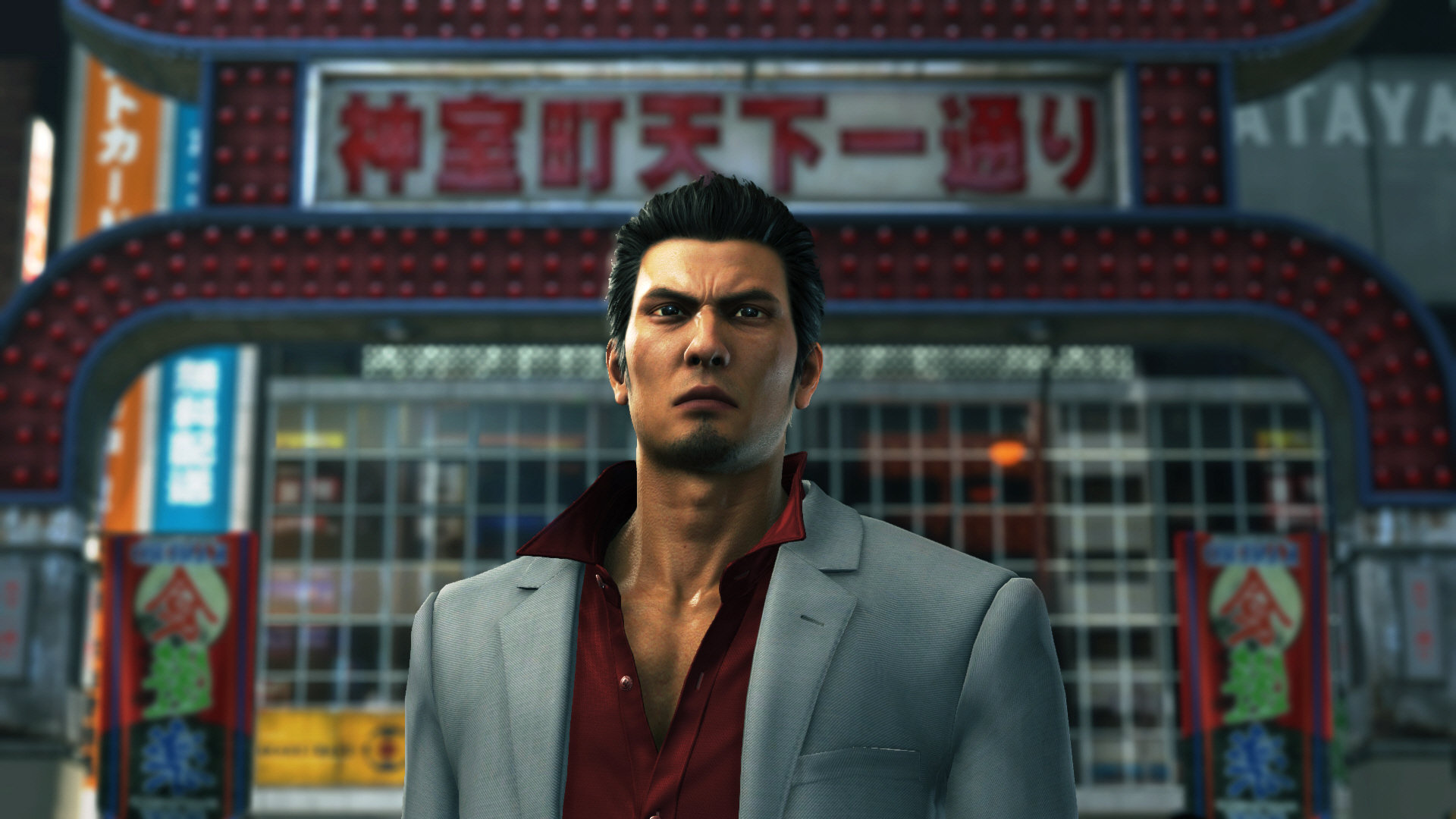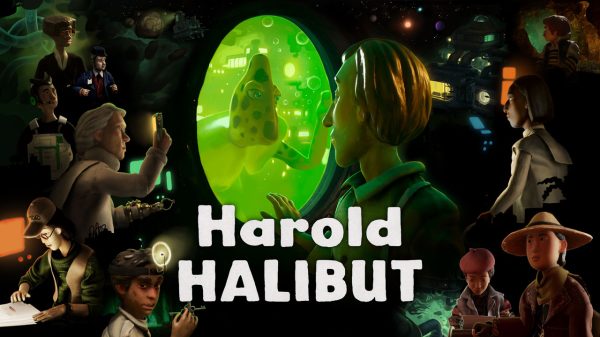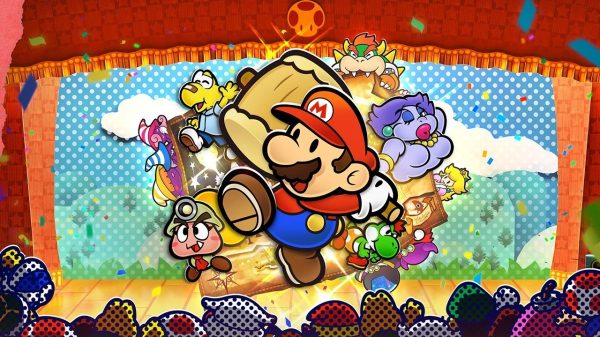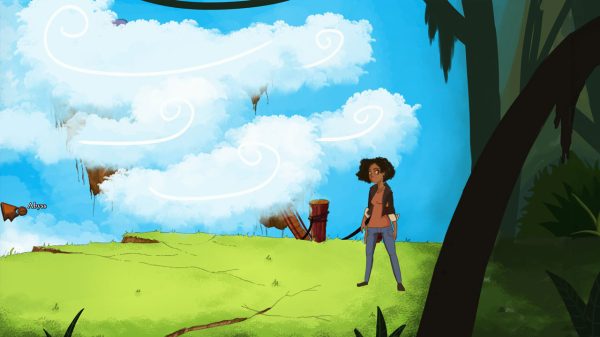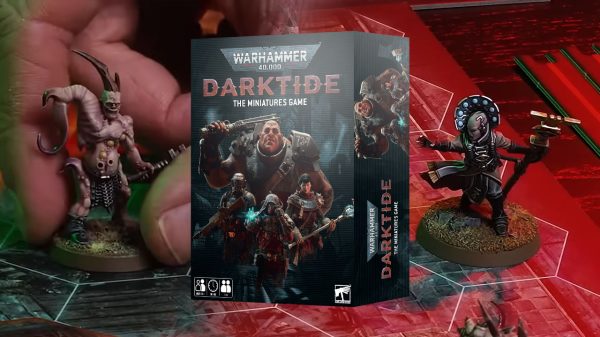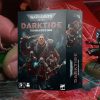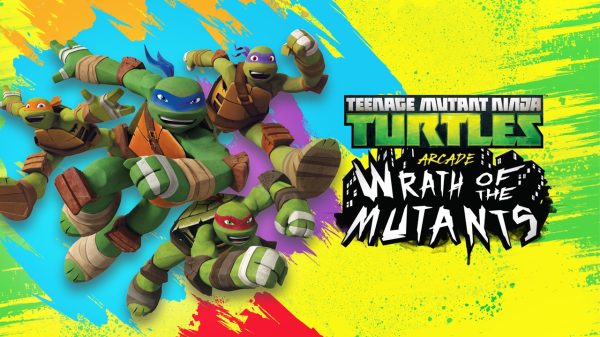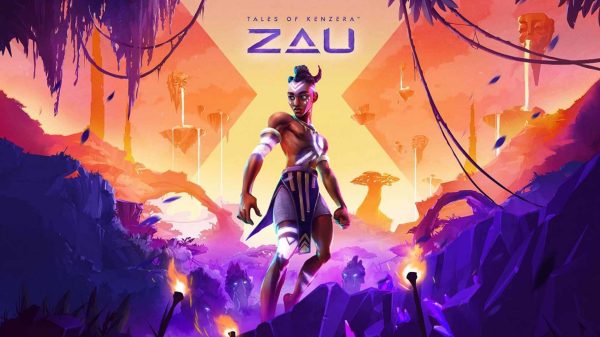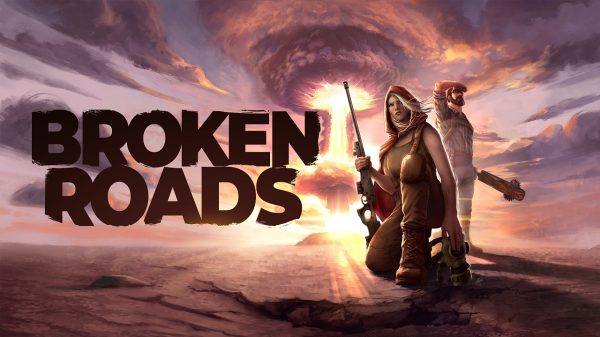Kazuma Kiryu. After half a dozen mainline games spanning a 30-year story, the ‘Dragon of Dojima’ has established himself as quite possibly the hardest man in all of Japan. Between numerous mob wars, regular stints in jail and a swift rise to the head position of Kanto’s largest Yakuza family, there was yet to be a single obstacle that Kiryu-san couldn’t overcome with a raised fist and a permanent scowl. That is, until meeting his greatest challenge yet — parenthood. In Yakuza 6, the closing chapter to Kiryu’s role in the franchise, we see the revered and infamous ex-gangster at his most vulnerable and the series’ storytelling at its absolute best.
Yakuza 6’s opening prologue follows directly from the events of Yakuza 5, in which famous pop idol Haruka Samuwara publicly addresses her ties to the Yakuza as Kiryu’s defacto daughter and announces her stepping down from the limelight. The two are reunited and Haruka returns home to the Sunshine Orphanage in Okinawa, while Kiryu decides to make a fresh start by renouncing his Yakuza status and submitting to yet another jail sentence. After returning three years later Kiryu discovers that Haruka has been missing from Okinawa for nearly as long, only to then receive word that not only is she in a coma after a hit-and-run accident in Tokyo but that she now has an infant son. This news leads Kiryu to embark on a search for answers that pulls him reluctantly back into the world of organised crime and sets off a chain of events that exposes a looming threat to the very fabric of the Yakuza, and even Japan itself.
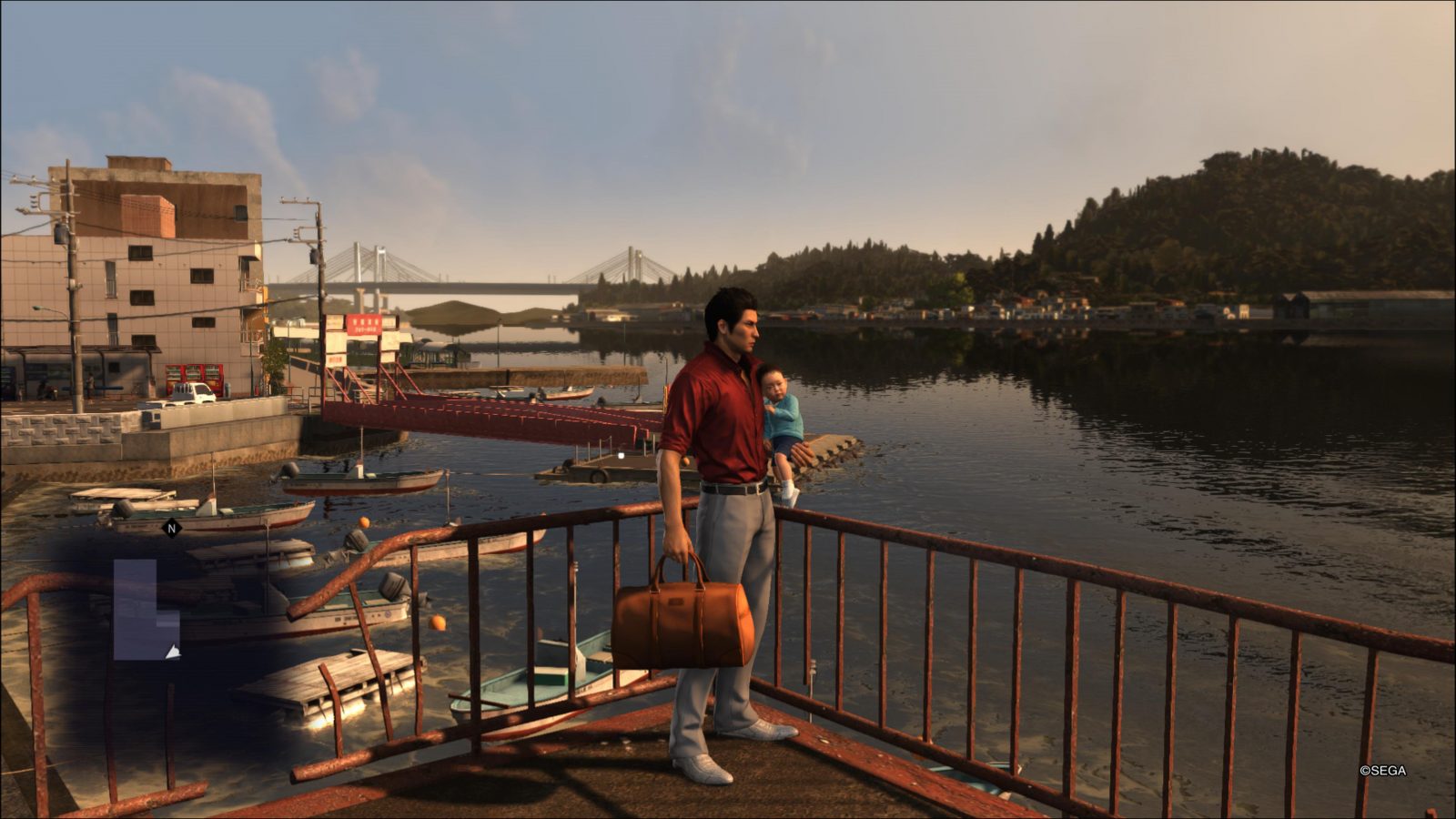
Kiryu was ready to start a new life with a bag full of drug money and the baby he had kidnapped earlier
Yakuza 6’s story takes a decidedly more pared back approach than previous games, choosing to focus less on the convoluted drama of Tokyo’s crime underbelly and more on the immediate experiences of Kiryu and the few new characters that come to share this journey. The beauty of this approach is not just that it makes for one of the series’ most accessible storylines to date, but it serves to underline Kiryu’s own personal journey. In fact, Yakuza 6 shows an understanding of video game storytelling that very few games can claim. After having spent over a decade and countless hundreds of hours playing as a hard-boiled gangster capable of bringing down entire criminal organisations through sheer strength alone, the new and sudden panic of having to wander the streets of a sleepy coastal town in the middle of the night searching for formula to feed a screaming baby is not lost on the audience. Every encounter, every new bond formed, and every conspiracy uncovered comes full circle by the time the game wraps up its drawn-out and exponentially outrageous final act in a way that no other medium could hope to emulate. By playing out on a smaller scale, this last chapter in Kiryu’s journey is the most well-written and impactful yet. It’s all backed by a fantastic cast of new faces too, with renowned (and famously anti-video game) Japanese personality Takeshi Kitano playing what could be the franchise’s best supporting character to date.

Yakuza 6 doesn’t have a battle royale mode but it does have the guy from Battle Royale
As with its story, Yakuza 6’s setting and the gameplay contained within share a similarly reduced scope in favour of accessibility and focus. Where the series’ measure of growth was once in the increased scale and depth of each subsequent iteration, culminating in Yakuza 5’s multiple cities and protagonists and laundry-list of side content, the latest entry is comparatively slight. Taking place across the well-trodden streets of Kamurocho and the tiny coastal town of Onomichi, there are decidedly fewer places to go and things to do this time around. While the omission of quite a few fan-favourite activities is lamentable, it all comes back to the changed sensibilities of the game. Yakuza 6 feels much like the cleanse and reset that its protagonist is striving for, and the smaller focus coupled with the increased fidelity of modern hardware allows the spaces the game occupies to shine more than ever. The stark contrast between the two locations shows at more than just the surface level and informs the moment-to-moment gameplay as well as the story. Despite knowing Kamurocho like the back of his hand, Kiryu finds that the social and technological landscape has changed enough in three years that he already feels out of his depth. Many of the side missions and activities here involve Kiryu’s run-ins with concepts that are beyond his understanding, things like social media and even the wild world of adult webchat that prove to be just as entertaining as his attempts at child-rearing. Conversely, Onomichi is a small and quiet place, with little in the way of diversions and a penchant for the occult. Rather than tackling aspiring YouTubers and finding lost drones, Kiryu’s time by the sea finds him tussling with pirate ghosts and time travelling schoolgirls. Newcomers needn’t worry either as the game’s plot is mostly self-contained, featuring a core cast of fresh characters and wisely not calling back to previous events too often. There’s also a selection of short summaries of the five previous games available from the main menu should context be desired.
Yakuza 6 has a bunch of minigames, some new, some old. Spearfishing is a clear highlight; it's basically an on-rails shooter with waves of fish to catch and some crazy undersea boss fights. Old favourites like karaoke and cabaret clubs make an expected and welcome comeback as well. Kiryu can also chat online with camgirls, portrayed by real-life models. It's uh... interesting. Probably not something you'd participate in when there are others in the room.
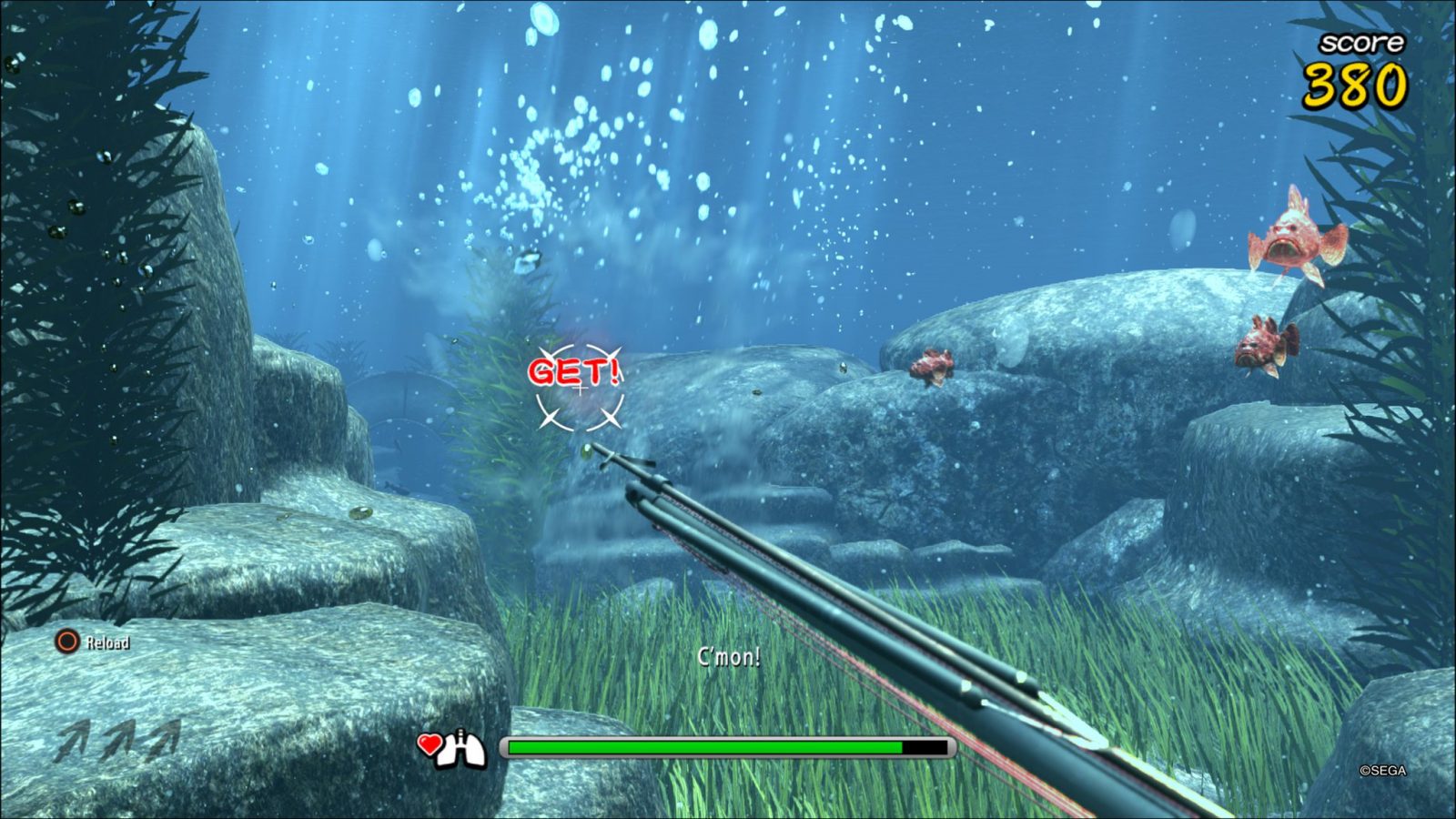

Of course, what would a Yakuza game be without a constant barrage of gangsters, punks and wannabe hard men to lay the beatdown on at every turn? Despite his departure from the family and softening demeanour, Kiryu remains ready to throw down at any given moment, and in Yakuza 6 that means fights are more immediate than ever. Where running into thugs on the street in prior games would result in a cut to an enclosed encounter, fights now take place completely in real time with no load screens or artificial barriers. A brawl could start in an alleyway before spilling out onto a busy street, for example, or even through the doors of a nearby store or restaurant, as the loading between the outdoors and indoors has also been eliminated. Of all of the game’s core elements to see a reduction in depth though, it’s the combat that comes closest to suffering for it. Fighting has been distilled to its bare essences which means no stances, no equipable weapons and a fairly small moveset. Kiryu can still grab weapons and objects from the environment and perform contextual ‘Heat Actions’, and everything has a great immediacy and flashiness to it, but after 30-something hours the lack of variety means tedium can set in. There are some fantastic set pieces and boss encounters though and throwing entire scooters at crowds of well-dressed mobsters rarely gets old.
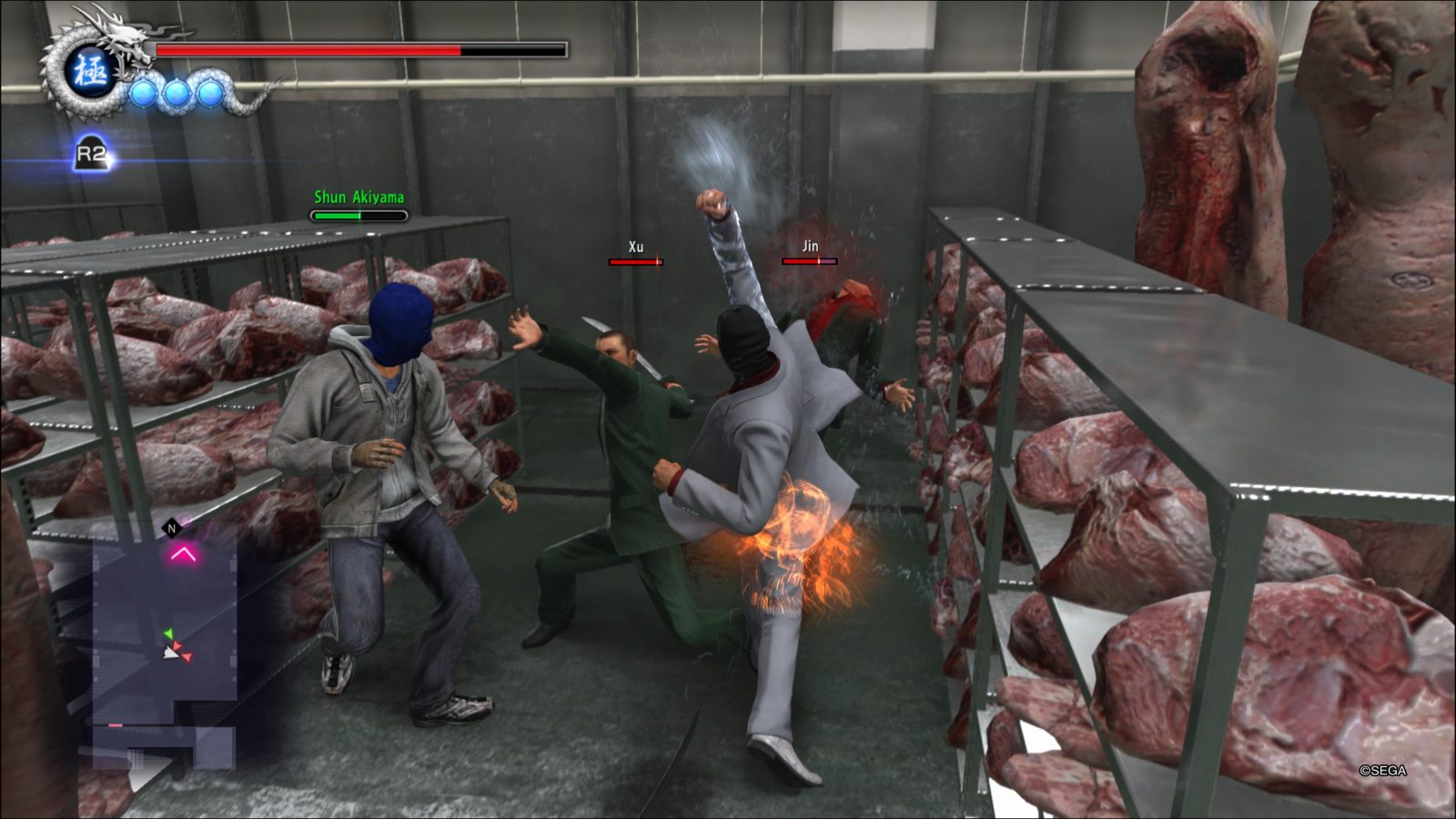
These animal rights people are getting ballsy
All of this changed gameplay and gripping storytelling is underpinned by Yakuza 6’s brand new Dragon Engine, and it would be remiss of me to not point out the immense importance of the new technology to the success of the game. Aside from the benefits to pacing and fluidity gained from the lack of loading breaks, the new engine also brings with it a fidelity and richness that helps sell the already-brilliant setting and story. While maybe not yet as technically accomplished as some other big-ticket AAA games, the game’s rich detail, excellent lighting and astonishingly lifelike characters create an atmosphere that’s almost unrivalled. A few rough edges are nothing in the face of top-notch cinematography both in cutscenes and in gameplay, with shots that could put some of the best films to shame. Previous games could err on the side of excess with their numerous and protracted scenes, but Yakuza 6 is undoubtedly just as great a passive experience as it is an interactive one.
Final Thoughts
Yakuza 6 takes a big risk by presenting a less ambitious offering than its immediate predecessors, but it pays off. By playing out on a smaller scale, the setting and its key players are allowed to shine more than ever, and the engrossing gameplay and neatly told story come together in perfect harmony. It’s a bittersweet goodbye to the Yakuza series as we know it, not least because it feels like just as much a reset as it does an ending, but it’s more than fitting. As the great Coolio once spoke, ‘Been spendin’ most our lives, livin’ in a gangster’s paradise’. So true.
Reviewed on PlayStation 4 Pro | Review code supplied by publisher
Click here for more information on WellPlayed’s review policy and ethics

- SEGA / Ryu ga Gotoku Studio
- SEGA
- PS4
- April 17, 2018



Kieron's been gaming ever since he could first speak the words "Blast Processing" and hasn't lost his love for platformers and JRPGs since. A connoisseur of avant-garde indie experiences and underground cult classics, Kieron is a devout worshipper at the churches of Double Fine and Annapurna Interactive, to drop just a couple of names.





